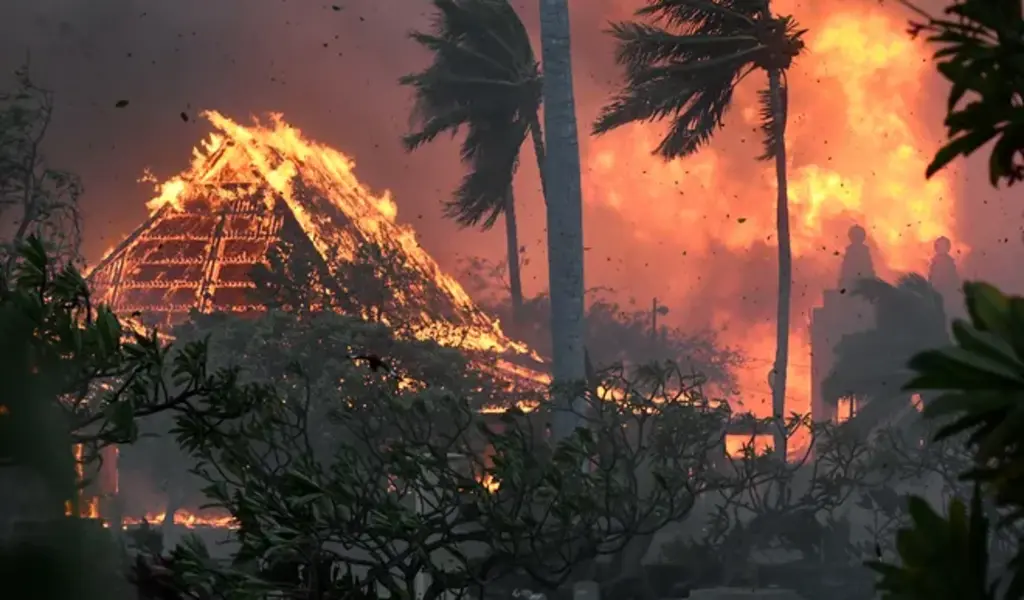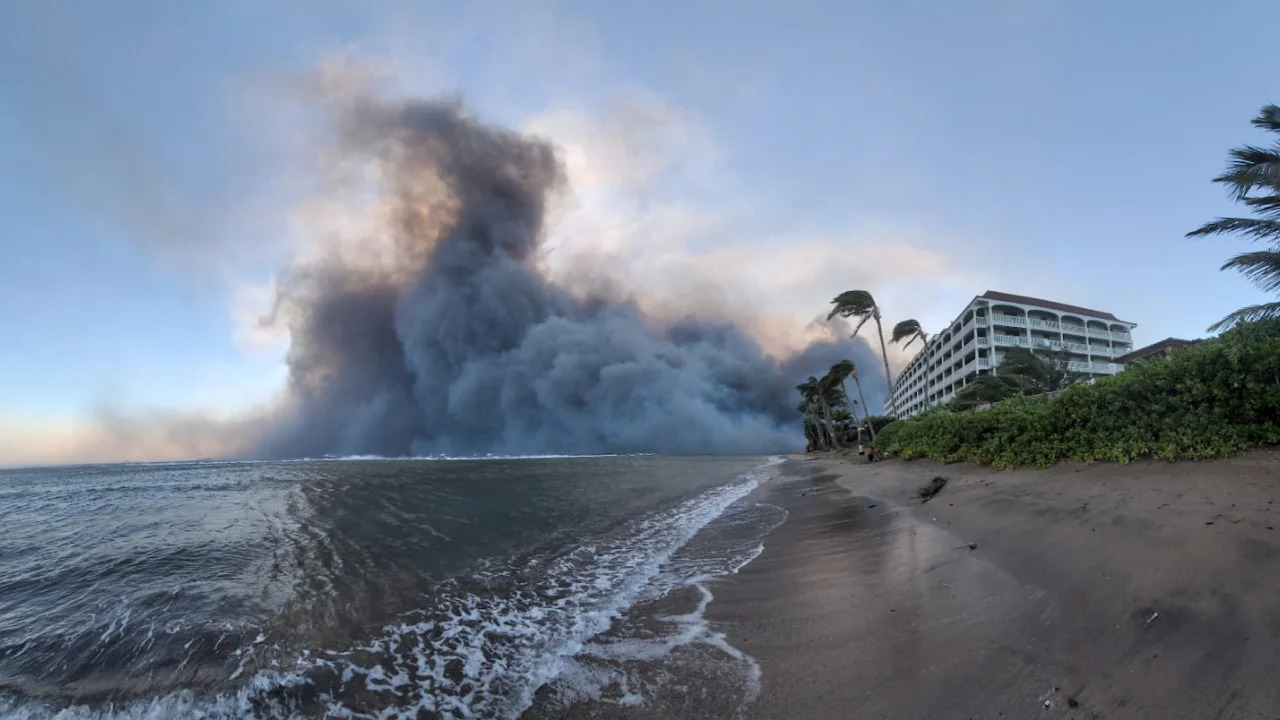Maui Fire: Investigations into the cause of the devastating inferno that razed the picturesque coastal community of Lahaina in Hawaii may extend over a span of weeks or even months. This catastrophic wildfire stands as one of the most lethal in the annals of American history.
Already, significant scrutiny is being directed toward the potential involvement of power lines owned by Hawaiian Electric Industries.
This conjecture has been exacerbated by the company’s stock value plummeting by more than 40 percent since the commencement of the fire.
While the ignition source for the blaze could have originated from various factors, the current focus centers on the historical precedent of electrical lines instigating fires amid episodes of intense windstorms.
These gusty winds acted as a relentless catalyst, propelling the flames to their devastating extremity. If you have been affected by the Maui Fire, please get in touch with Maui fire lawyers.

Unraveling the Enigma: Hawaiian Electric’s Role in the Perplexing Maui Fire
As the Maui fire continues to baffle authorities, questions surround the role of Hawaiian Electric, the island’s power utility provider.
Criticism has mounted against the company for its failure to initiate a power shutdown despite advance warnings about the perilous fire conditions, fueled by the forecasted dry, gale-force winds.
On August 8th, a series of wildfires erupted across Maui, coinciding with the passage of Hurricane Dora to the south of the Hawaiian archipelago.
Notably, Hawaiian Electric issued alerts to its customers that day, acknowledging power line disruptions in West Maui – the very region where Lahaina is situated – and near Kula, where another fire was ignited.
Curiously, the company’s official communication, which warned customers of potential prolonged power outages, conspicuously omitted any mention of the wildfires themselves.
Nevertheless, the confluence of potent winds and arid vegetation creates a myriad of potential fire-starting sources.
Instances of fires being triggered by discarded cigarette butts, chains dragged by vehicles along roadways, and even the infamous case of pyrotechnics at a gender-reveal party, underscore the variety of ignition possibilities under such conditions.
As investigators work diligently to unveil the Maui fire’s origins, the spotlight remains on the events leading up to its catastrophic outbreak.
Unraveling the Mechanism: How Power Lines Instigate Wildfires
Power lines can play a pivotal role in igniting wildfires, often in conjunction with wind. The interplay between these elements can lead to various scenarios that trigger destructive fires.
- Wind-induced Damage: Powerful gusts of wind can forcefully bring down power lines or topple poles, directly initiating the potential for a wildfire. Additionally, winds have the capability to uproot nearby trees or propel branches into power lines, resulting in the generation of sparks.
- Swaying and Collision: Even if power lines remain suspended, strong winds can cause them to sway and come into contact with one another. This collision generates sparks and can result in molten metal being ejected onto the grass or vegetation below, providing a combustible environment.
Historical Perspective: Power Lines and Wildfires
The history of power lines in relation to wildfires, particularly in the western United States, underscores their role as fire catalysts.
California, in particular, has been significantly impacted by power line-triggered fires. The state’s largest utility, PG&E, faced financial turmoil, culminating in a 2019 bankruptcy declaration.
This dire situation was precipitated by a series of catastrophic wind-driven fires attributed to the company’s equipment.
Notable instances include the 2017 wine country fires located north of San Francisco and the 2018 Camp Fire, a disaster that leveled the town of Paradise and resulted in the tragic loss of 85 lives.
Drawing Parallel: Maui and PG&E Settlement
Law firms representing fire victims were instrumental in securing a substantial $13.5 billion settlement from PG&E, in response to the widespread devastation caused by fires.
Now, these same plaintiff law firms are actively involved in the Maui fire investigation, reflecting the pressing need to ascertain accountability and compensation for the destruction caused by power line-related wildfires.
As the investigation into the Maui fire unfolds, the harrowing connection between power lines, wind, and the potential for catastrophic wildfires remains a critical focus.
Mitigating Power Line-Linked Fires: Strategies for Prevention
In the ongoing endeavor to prevent fires originating from power lines, utilities have adopted a range of strategies.
The urgency spurred by a series of lethal fires in the western United States, intensified by prolonged drought conditions, has compelled these companies to explore innovative approaches beyond traditional tree-trimming methods.
- Underground Power Lines and Protective Coatings: Utilities have begun transitioning a portion of their power lines underground, reducing the vulnerability of overhead lines to external factors like falling branches. Additionally, the implementation of protective coatings on overhead lines acts as a barrier against potential sparks and ignitions.
- Preemptive Power Line Shutdowns: In regions like California, Nevada, and Oregon, a practice known as Public Safety Power Shutoffs has emerged. During periods of dry conditions and high winds, utilities proactively cut off power lines. While this measure may inconvenience customers, it has demonstrated its efficacy in averting fire outbreaks.
Hawaiian Electric’s Conundrum: Implications and Potential Outcomes
The scrutiny surrounding Hawaiian Electric’s potential involvement in instigating the Maui fires, a disaster claiming the lives of over 90 individuals, has precipitated a sell-off of the company’s stock.
This investor concern manifested in a notable plummet in share value, marking the most significant single-day decline in 19 years, observed on August 14th.
Notably, Guggenheim Securities, a reputable New York-based investment research firm, highlighted the company’s substantial size, boasting a market capitalization of approximately $2.3 billion, and the prospective liabilities if power lines are indeed implicated in the fires.
The firm underscored the challenge of envisioning the company’s survival in its current configuration post this tragic incident.
Consequently, the potential outcome could involve governmental intervention, possibly culminating in an alteration of the company’s structure through municipalization or similar measures.
As the aftermath of the Maui fires unfolds, the trajectory of Hawaiian Electric and its future role within the power landscape remains shrouded in uncertainty, contingent upon the resolution of the ongoing investigations and the subsequent decisions taken in response.
RELATED CTN NEWS:
Texan Woman Cecily Aguilar Receives 30-Year Prison Sentence For Role In Vanessa Guillén’s Case
Remembering The Morandi Bridge Tragedy: Italy Marks 5th Anniversary With Calls For Justice
Pfizer’s Breakthrough: FDA Grants Accelerated Approval For Innovative Blood Cancer Therapy







